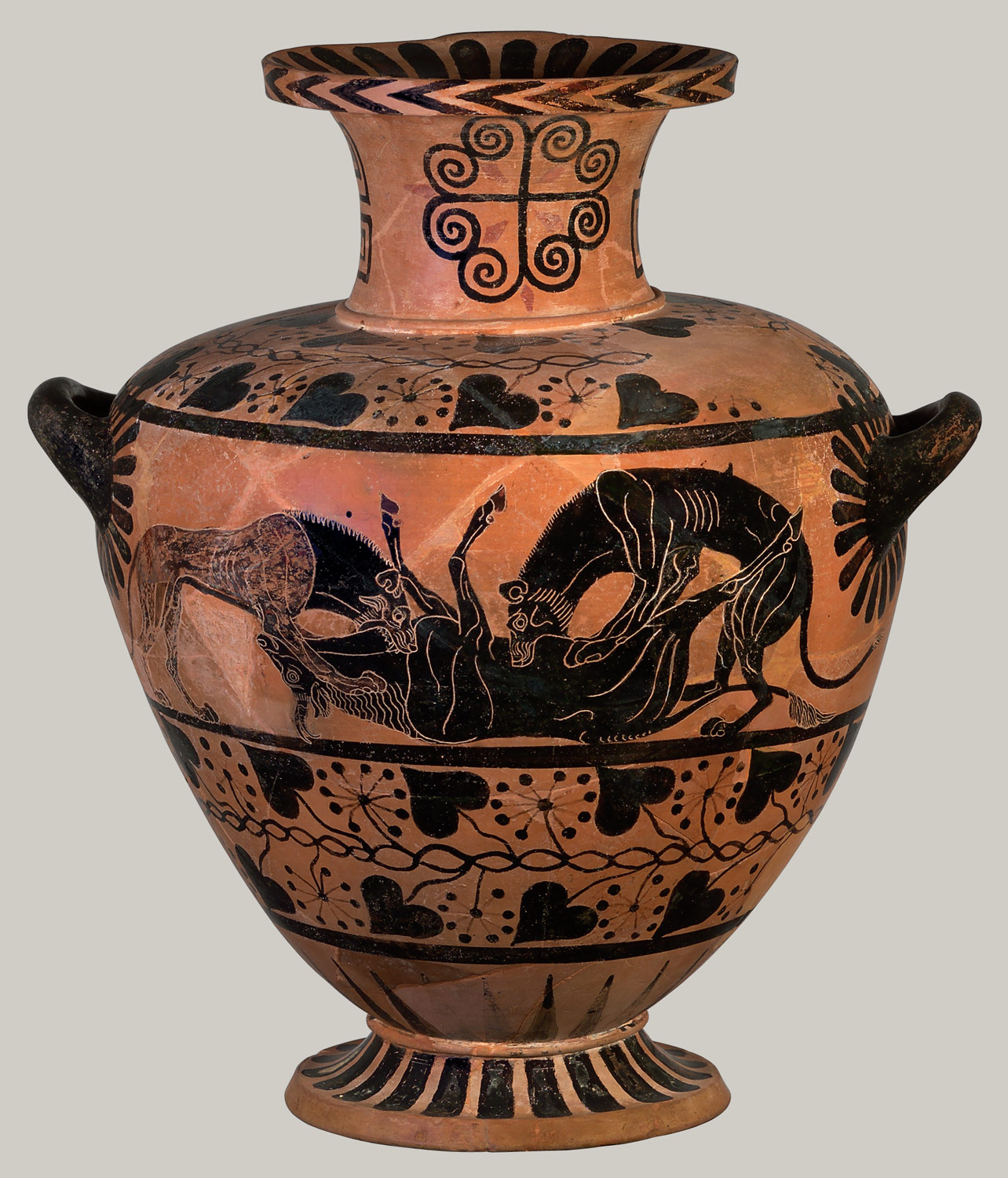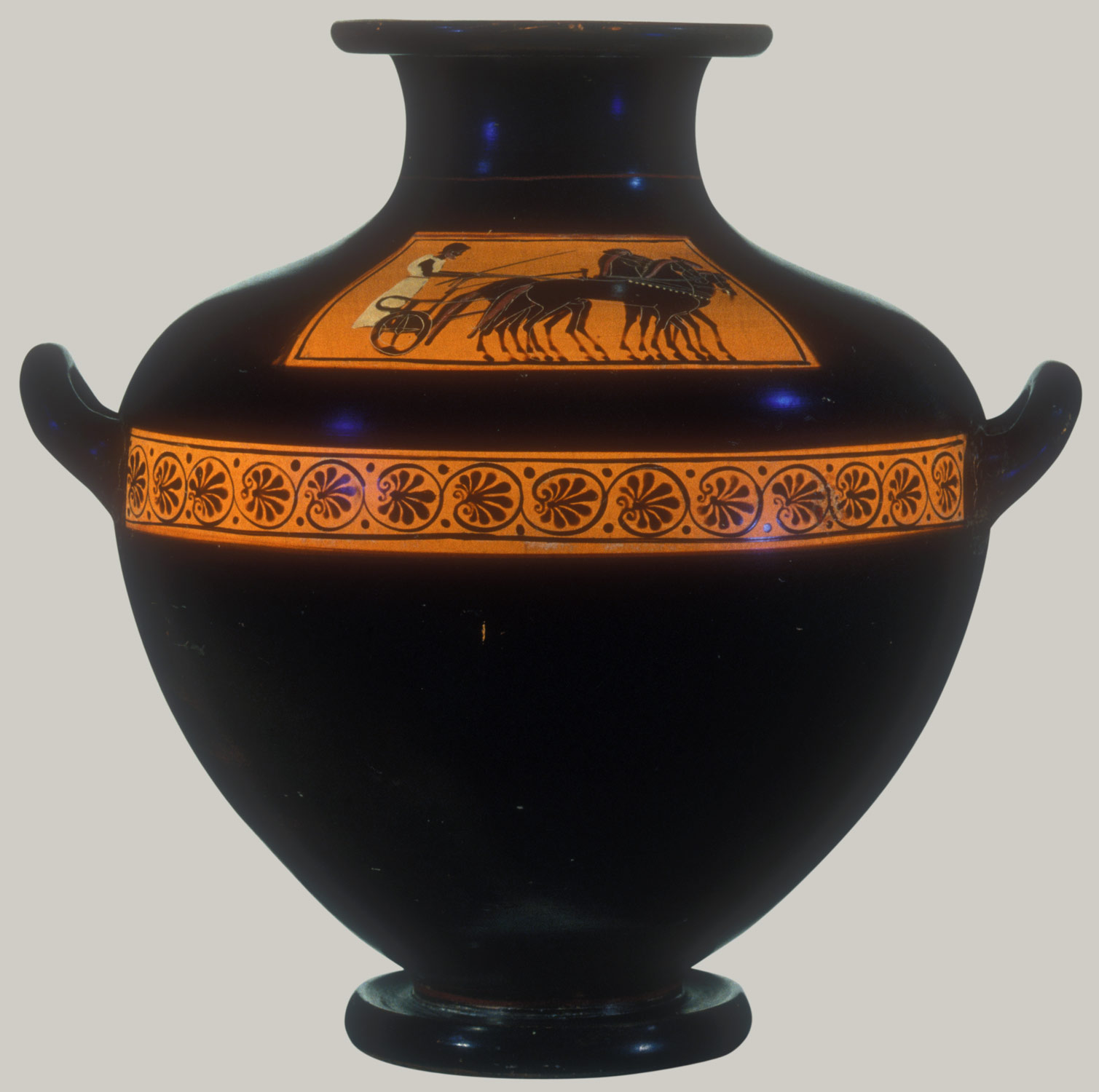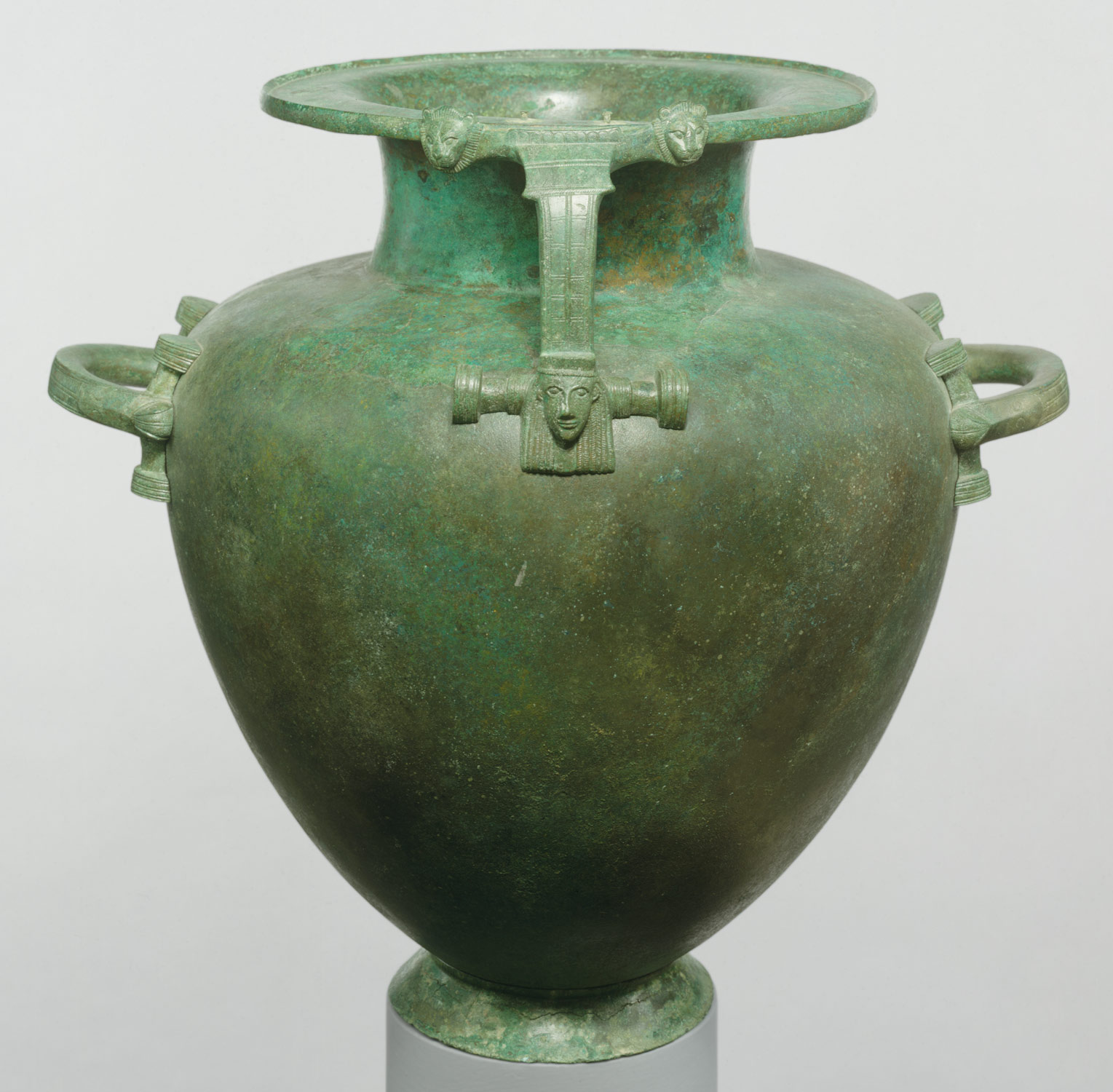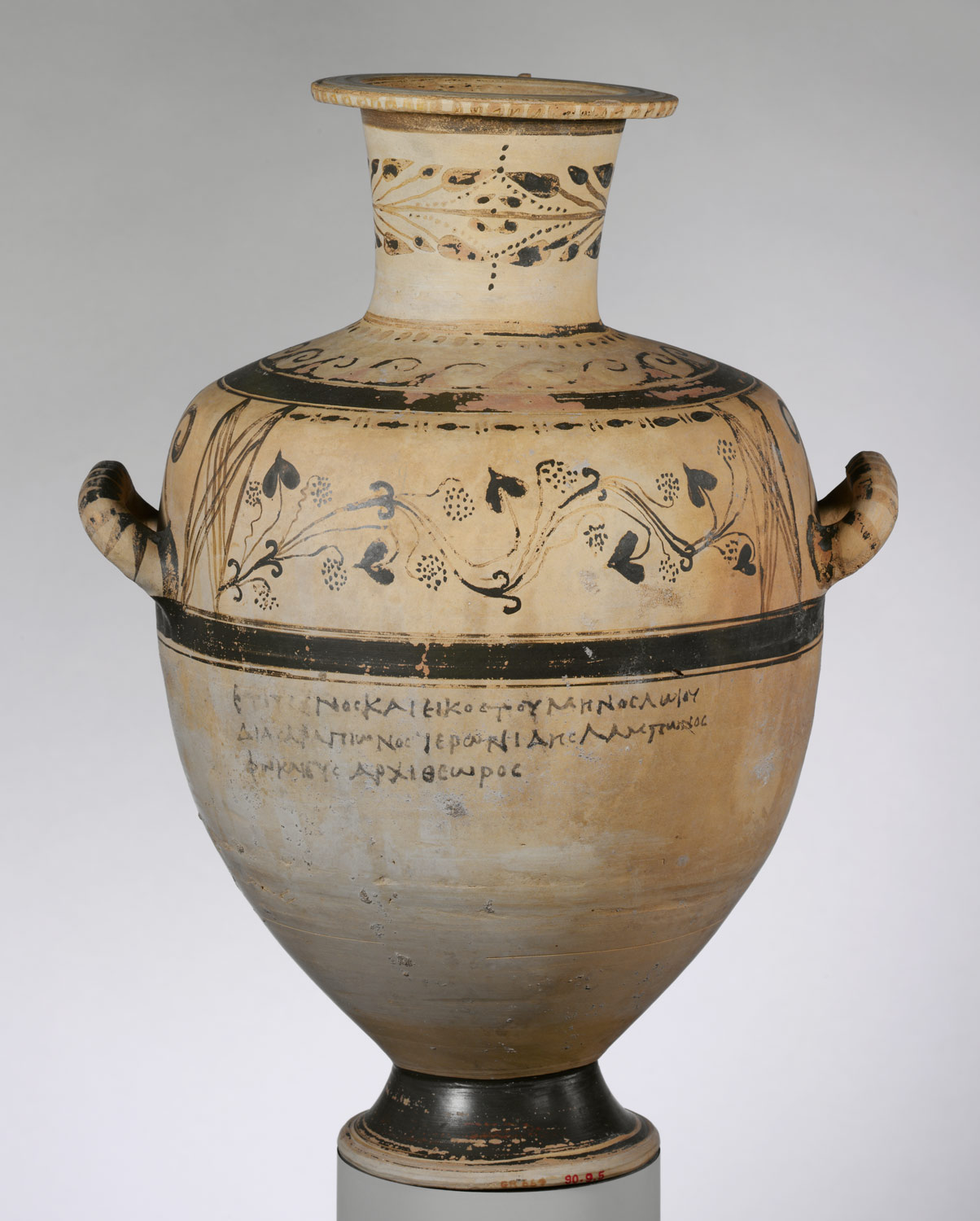The hydria, deriving from the Greek word for water, is a pot made for fetching water. The hydria usually depicts scenes of women carrying water from a fountain which was one of women's duties of the time. Once again, the Greek vessel has a utilitarian function of holding water, and is painted with imagery to reflect its purpose. It has two horizontal handles at the sides for lifting, and a vertical handle at the back for dipping and pouring. Most hydriai are bronze and t erracotta.
Terracotta hydria evolved from the seventh century BC to the third century BC from having a wide body with a rounded shoulder to more of one with a flatter shoulder, meeting the body at a sharp angle.

Terracotta hydria (water jar), ca. 520–510 B.C.
By the end of the sixth century BC a spin off of the hydria evolved called the kalpis. It had one continuous curve from the lip through the body of the vessel. The kalpis became the favorite vessel among red figure painters.

Terracotta hydria: kalpis (water jar), ca. 510 B.C
Terricotta black glazed hydria of the late Classical period were painted of gilt wreaths representing actual gold funerary wreaths. Many hydria depicted funerary scenes. Bronze Hydriai, with hammered bodies and feet and handles, featured sirens, which were also funerary connotations, representing death. Many of the bronze hydria turned green from corrosion from over the centuries. (I think they look really cool like this!)

Bronze hydria (water jar), late 7th–early 6th century B.C.
The Hadra Hydria is representative of the Hellenistic period. It was a water jug used as a cinerary urn, decorated with black paint, usually bearing inscriptions that identify the year in which one had died.

Terracotta Hadra hydria (water jar) with funerary inscription, 226–225 B.C.
I really liked your Information. Keep up the good work. Terracotta Water Jug
ReplyDelete